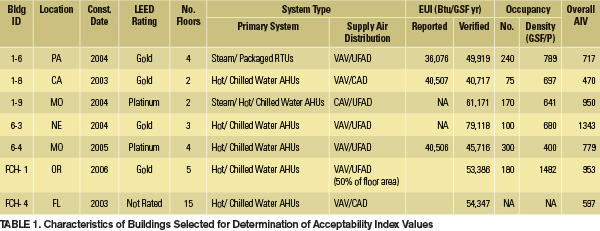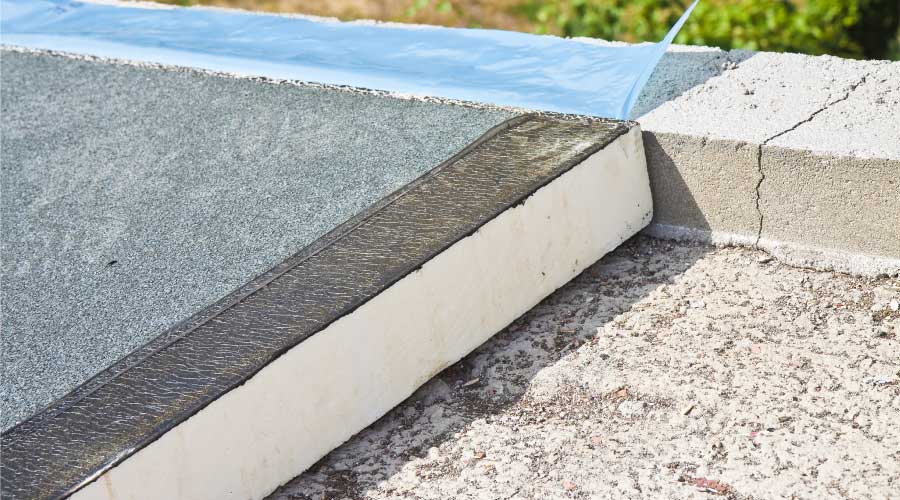Buildings’ Data Helps Reveal Effectiveness of Energy Use
Research, new metrics show the often overlooked relationship between energy efficiency and occupant comfort helps to define a truly high-performance building. Part 3 of a 5-part article.
Data from two reports — from the National Center for Energy Management and Building Technologies (NCEMBT) and from the National Institute of Building Sciences (NIBS) — were transformed into "Acceptability Index Values" (AIVs). The AIV measure offers a chance to increase the sensitivity of building performance metrics by evaluating the effectiveness of the annual energy used per percentage of overall occupant acceptability results.
The NCEMBT conducted original research in which energy consumption, building materials and system data, and human response and occupant performance data were obtained during occupied conditions. A total of 30 buildings were studied, 10 of which were "normative" office buildings, 10 "high-performance" office buildings, and 10 "normative" school buildings.
The National Institute of Building Sciences (NIBS) reported on post-occupancy evaluations of four U.S. federal courthouses that were constructed, expanded, or modernized between 1998 and 2008. Two of these were LEED Gold: one new construction (NC), and one existing building (EB pilot). Concurrent data were acquired for energy consumption and occupant responses, which were obtained by a standardized survey questionnaire. The occupant responses were in the "affective-environmental domain," as defined in the NIBS evaluation protocol. The NIBS reports also include analyses of building system performance.
Data from the NCEMBT and NIBS reports, which were validated for complete data sets, were transformed to AIVs. Table 1 (below) provides an overview of the characteristics of validated data for five buildings in the NCEMBT data set and two buildings from the NIBS data set.

New Efficiency Standard from ASHRAE, IES
A newly revised standard from ASHRAE and IES provides greater guidance and a more comprehensive approach to retrofitting existing buildings for increased energy efficiency. ANSI/ASHRAE/IES Standard 100-2015, Energy Efficiency in Existing Buildings, last published in 2006, provides comprehensive, detailed descriptions of the processes and procedures for the retrofit of existing buildings in order to achieve greater measured energy efficiency. Appendices are included for life-cycle cost analysis procedures as well as identification of potential energy conservation measures.
Standard 100 directly addresses a building's energy-use efficiency in a quantitative manner and provides a means to improve that efficiency with an objective benchmark. The latter was created with the assistance of the Energy Information Administration, the Federal Energy Management Program, and Oak Ridge National Laboratory.
Recognizing that the actual occupancy of the building plays a key role in its performance, the standard establishes the need to develop an energy management plan and an operation and maintenance program. It also addresses the requirements for ongoing commissioning.
For more information, visit www.ashrae.org.
A New LEED Platinum Record for High School
The new facility for Dunbar Senior High School in Washington, D.C., has set a new world record for a school, achieving 91 out of a possible 110 LEED points on its way to its Platinum certification. The school achieved a perfect 33 out of 33 in the energy and atmosphere category, and 11 for 11 in the water efficiency category.
The 600 students at the new 280,000-square-foot facility, which opened in 2013, achieved the highest standardized test scores of any school in the city for 2014.
The building includes the city's largest ground-source heat pump, two 20,000-gallon cisterns, and a 1,700-panel photovoltaic system that can power all classroom lights for eight hours a day. |
Related Topics:
















